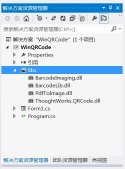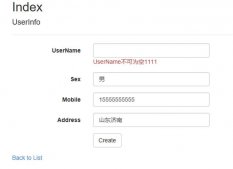在开发.NET Core web服务的时候,我们习惯使用自带的依赖注入容器来进行注入。
于是就会经常进行一个很频繁的的重复动作:定义一个接口->写实现类->注入
有时候会忘了写Add这一步,看到屏幕上的报错一脸懵逼,然后瞬间反应过来忘了注入了。赶紧补上serviceCollection.AddXXX这句话
虽然说有很多开源框架已经实现了类似的工作,比如AutoFac,Unity等依赖注入框架。但是这些库都太庞大了,我个人还是喜欢轻量级的实现。
定义一个枚举
|
1
2
3
4
5
6
7
8
9
10
11
12
13
14
15
16
17
|
[AttributeUsage(AttributeTargets.Class, AllowMultiple = false)] public class AutoInjectAttribute : Attribute { public AutoInjectAttribute(Type interfaceType, InjectType injectType) { Type = interfaceType; InjectType = injectType; } public Type Type { get; set; } /// <summary> /// 注入类型 /// </summary> public InjectType InjectType { get; set; } } |
定义三种注入类型
|
1
2
3
4
5
6
7
8
9
10
|
/// <summary> /// 注入类型 /// </summary> public enum InjectType { Scope, Single, Transient } |
扫描运行目录下所有的dll,进行自动注入
|
1
2
3
4
5
6
7
8
9
10
11
12
13
14
15
16
17
18
19
20
21
22
23
24
25
26
27
28
29
30
31
32
33
34
35
36
37
38
39
40
41
42
43
44
|
/// <summary> /// 自动依赖注入 /// </summary> public static class AutoInject { /// <summary> /// 自动注入所有的程序集有InjectAttribute标签 /// </summary> /// <param name="serviceCollection"></param> /// <returns></returns> public static IServiceCollection AddAutoDi(this IServiceCollection serviceCollection) { var path = AppDomain.CurrentDomain.BaseDirectory; var assemblies = Directory.GetFiles(path, "*.dll").Select(Assembly.LoadFrom).ToList(); foreach (var assembly in assemblies) { var types = assembly.GetTypes().Where(a => a.GetCustomAttribute<AutoInjectAttribute>() != null) .ToList(); if (types.Count <= 0) continue; foreach (var type in types) { var attr = type.GetCustomAttribute<AutoInjectAttribute>(); if (attr?.Type == null) continue; switch (attr.InjectType) { case InjectType.Scope: serviceCollection.AddScoped(attr.Type, type); break; case InjectType.Single: serviceCollection.AddSingleton(attr.Type, type); break; case InjectType.Transient: serviceCollection.AddTransient(attr.Type, type); break; default: throw new ArgumentOutOfRangeException(); } } } return serviceCollection; } } |
使用自动依赖注入功能
|
1
2
3
4
5
|
public void ConfigureServices(IServiceCollection services) { services.AddAutoDi(); } |
|
1
2
3
4
5
6
7
8
9
10
11
12
13
14
|
public interface ITest { string Say(); } [AutoInject(typeof(ITest),InjectType.Scope)] public class Test : ITest { public String Say() { return "test:"+DateTime.Now.ToString(); } } |
再次运行程序,所有的贴有AutoInject的所有的实现类,都会被注入到asp.net core的依赖注入容器中。
以上就是ASP.NET Core实现自动依赖注入的详细内容,更多关于ASP.NET Core 自动依赖注入的资料请关注服务器之家其它相关文章!
原文链接:https://www.cnblogs.com/boxrice/p/14664424.html














